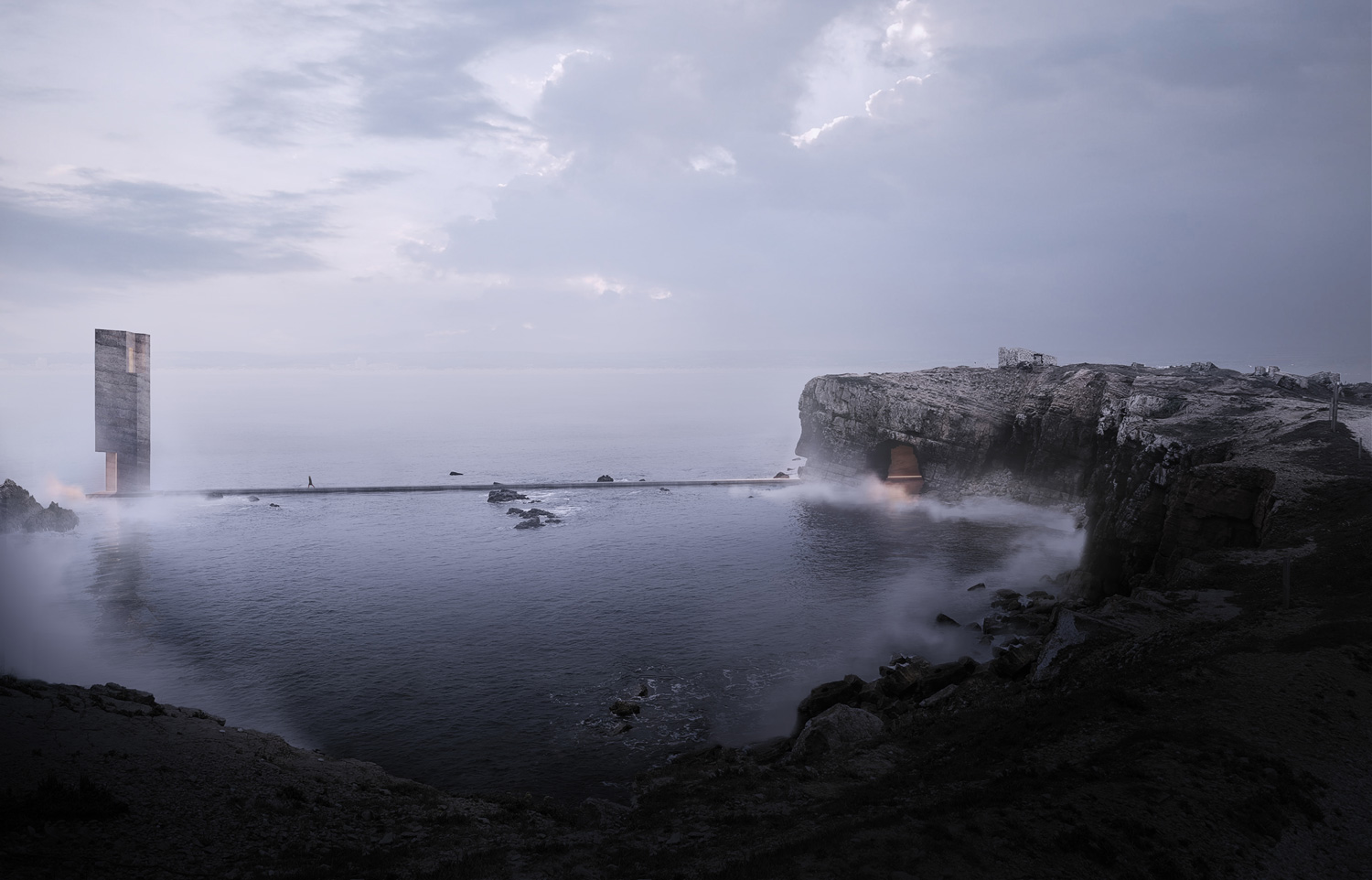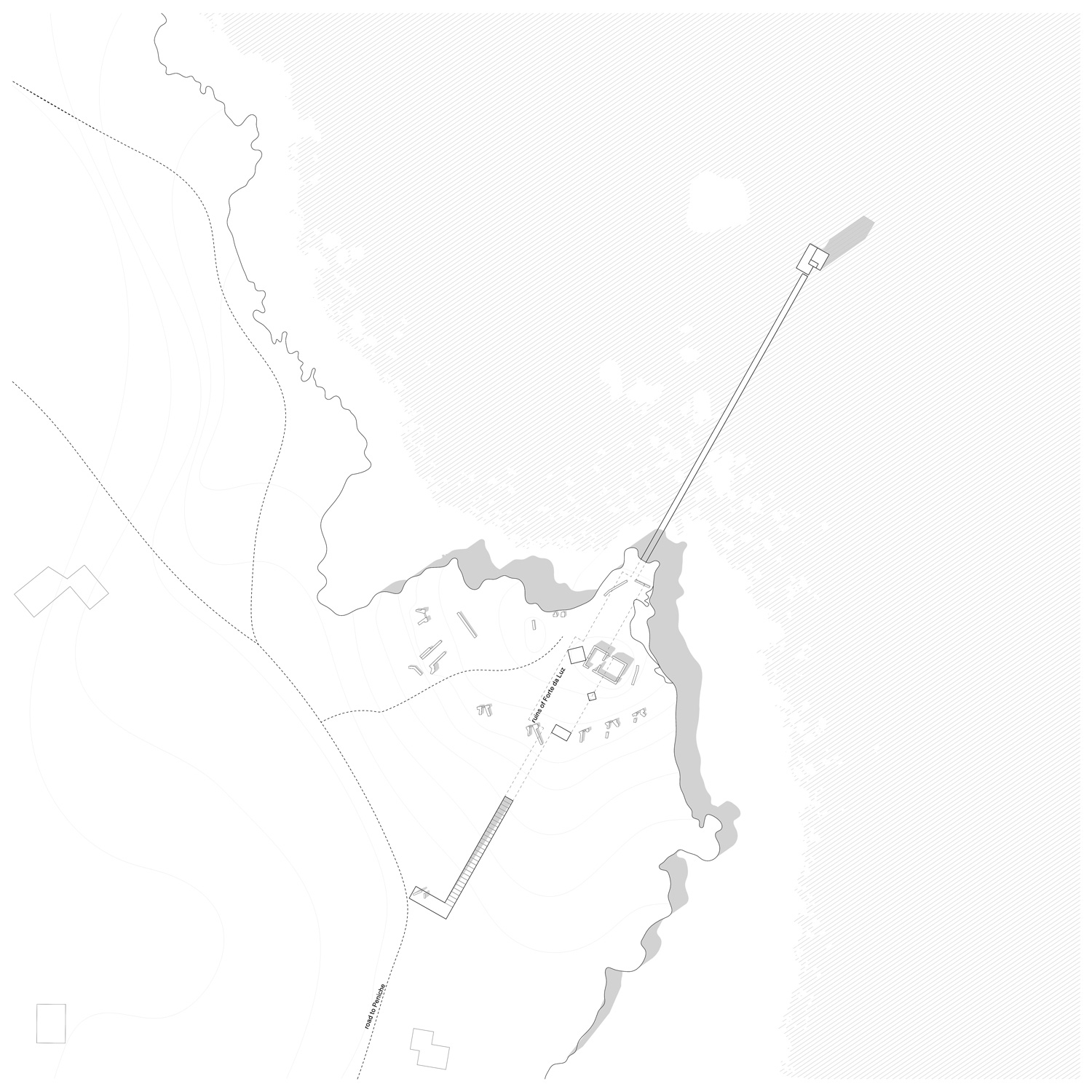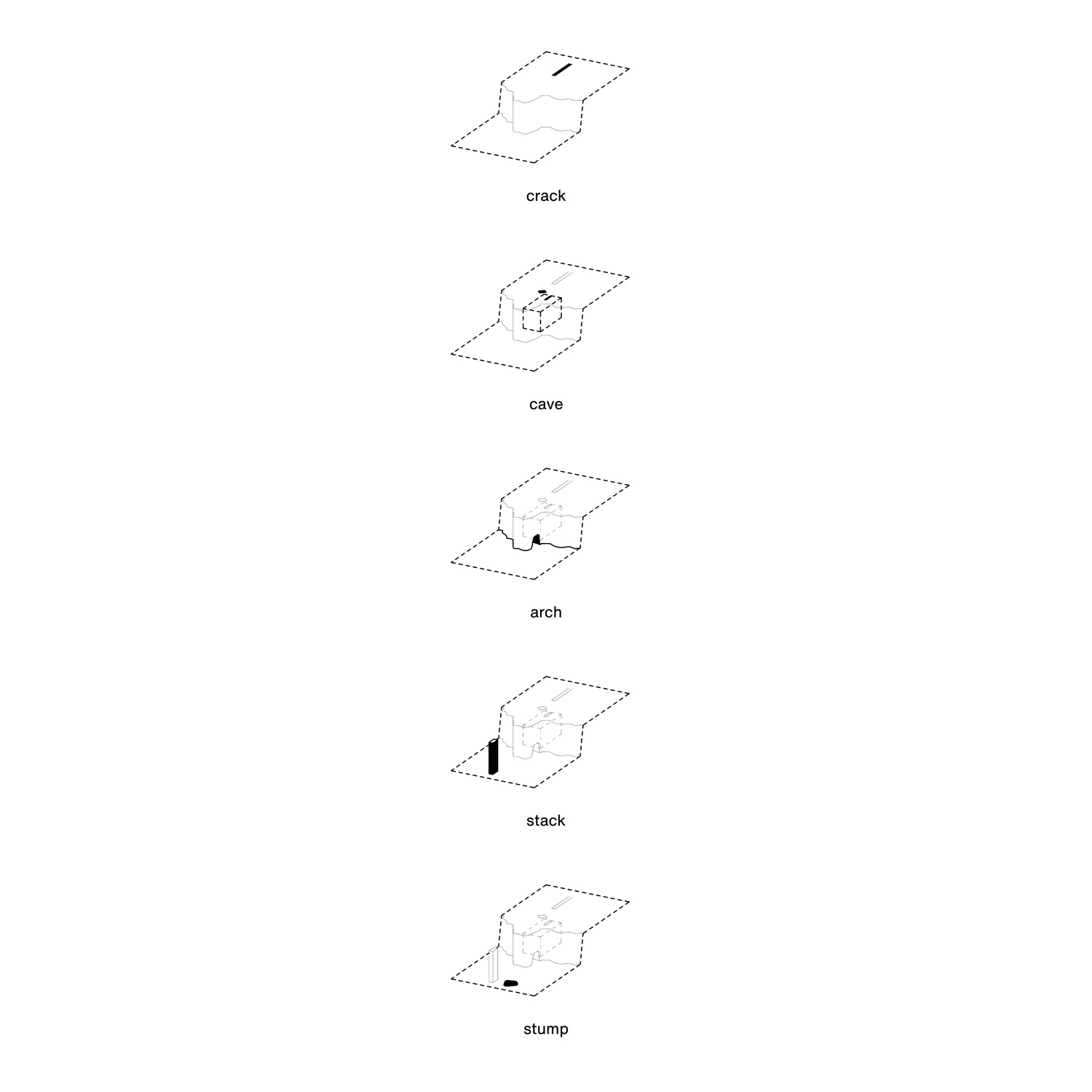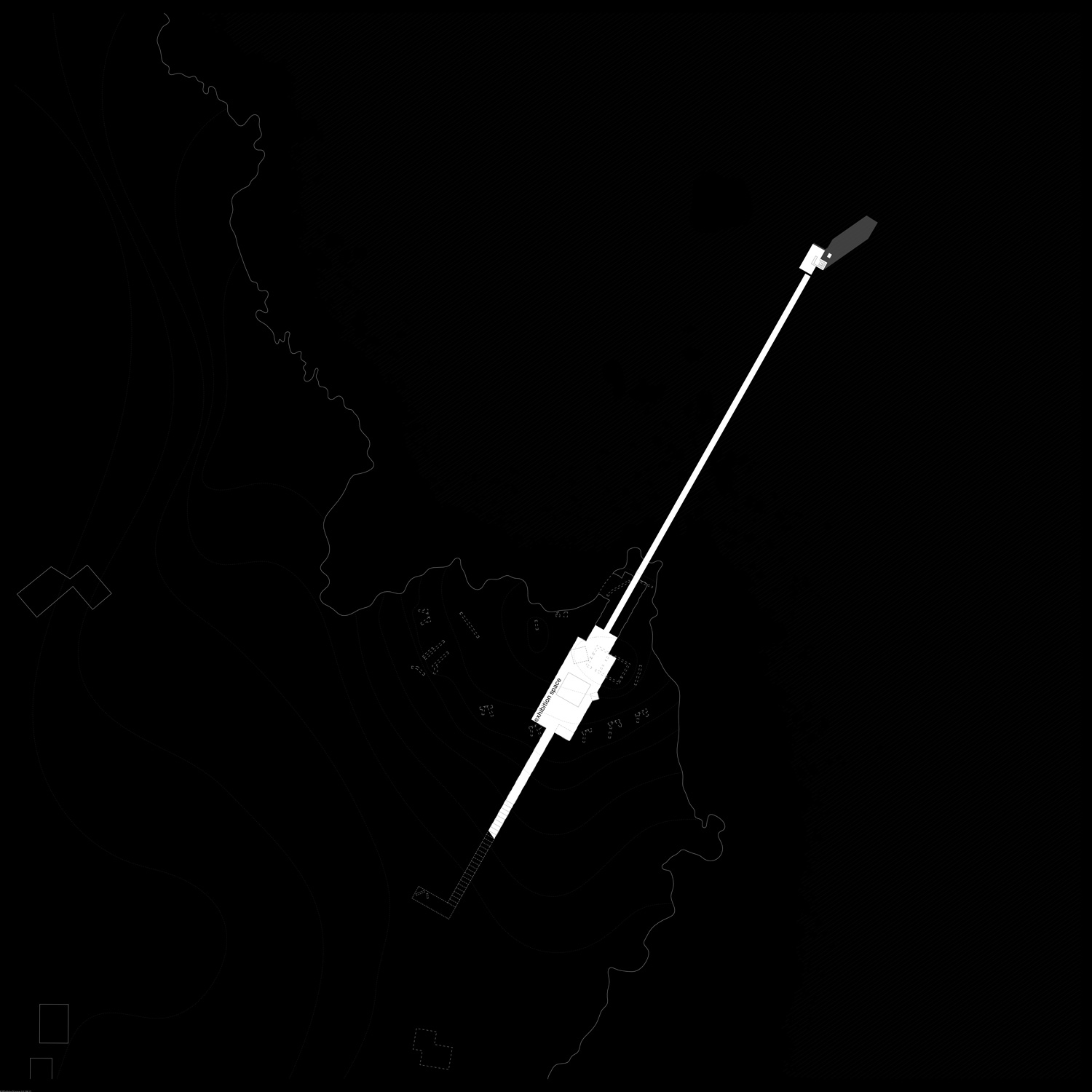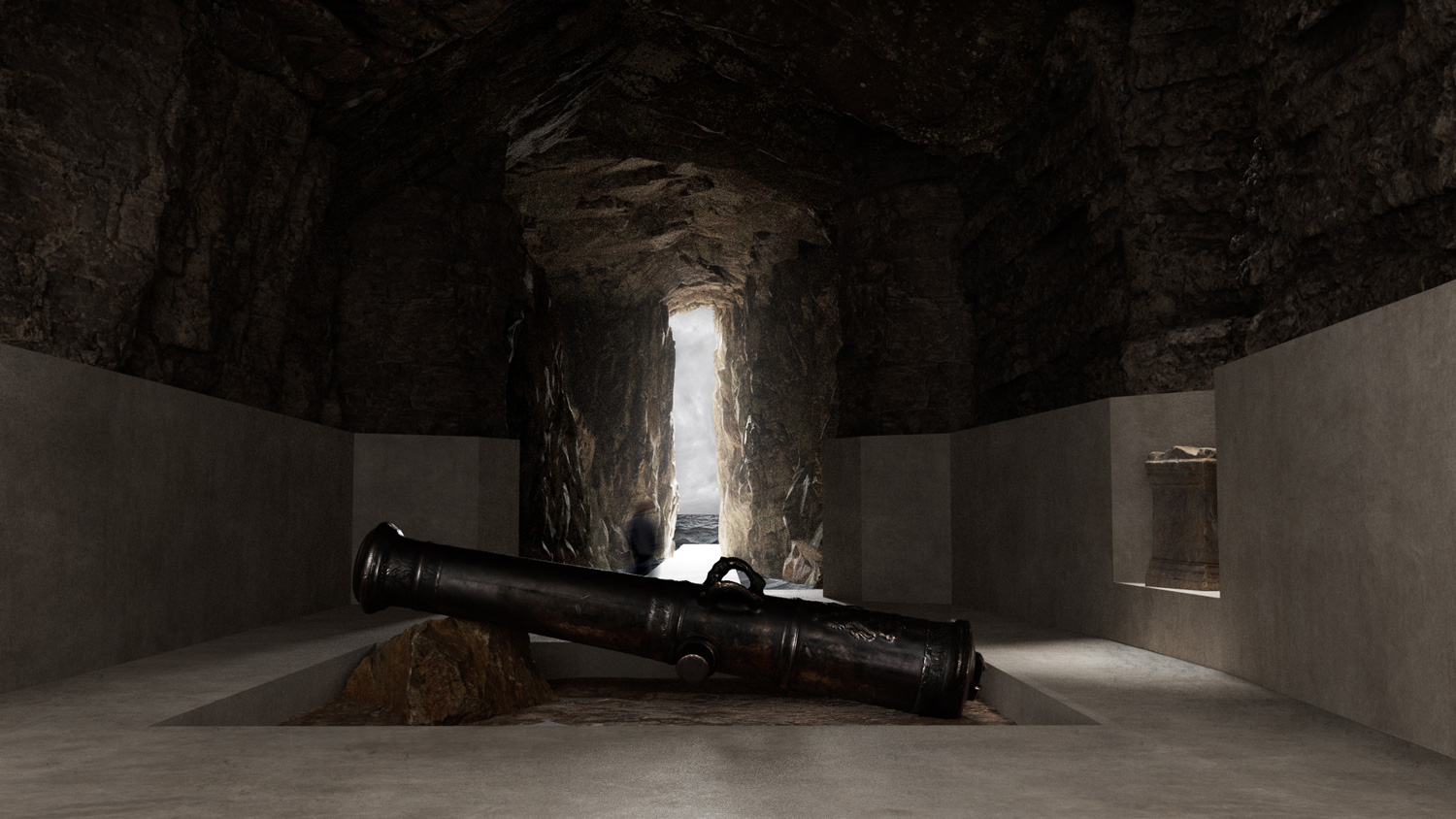☉ Memories in stones is an honour mention competition entry by David Nyul and Norman Kakas for ArkXsite in 2021. It is located in Peniche Portugal in a seaside setting. Its scale is small with a surface of 700 sqm. Key materials are concrete and stone.
When the sea waves crash against the rock face by hydraulic action and abrasion, the crack on the headland is slowly formed. Over time, the destructive torrents continually attack the coastline, the crack widens and becomes deeper. Then, a sea cave is formed. As the cave continues to be eroded and deepened, it is pushed through the headland to form a sea arch. In a similar fashion, the sea arch continues to be eroded and expanded until the rock becomes too weak to support the weight of the arch and it collapses into the sea. The remaining rock pillar is called a sea stack. When it is worn down even further, until it is just above the surface of the water, it forms a sea stump. As the cliff retreats, a wave-cut platform is left behind the base.
When the sea waves crash against the rock face by hydraulic action and abrasion, the crack on the headland is slowly formed. Over time, the destructive torrents continually attack the coastline, the crack widens and becomes deeper. Then, a sea cave is formed. As the cave continues to be eroded and deepened, it is pushed through the headland to form a sea arch. In a similar fashion, the sea arch continues to be eroded and expanded until the rock becomes too weak to support the weight of the arch and it collapses into the sea. The remaining rock pillar is called a sea stack.
When it is worn down even further, until it is just above the surface of the water, it forms a sea stump. As the cliff retreats, a wave-cut platform is left behind the base. These eroded formations can be observed on the northern shore of Peniche. This sets the backdrop for the ruins of Forte da Luz. The passing of time has left its mark on both the remains and the rock face. Our vision finds its place between nature and the remnants of the past. The site shelter leaves the existing ruins untouched, not disturbing the delicate symbiosis of the shoreline. It rather stays in the background, with only a few elements in sight.
The vision is built upon the road coming from the city and the remnants on the shore. Visitors are informed by totem poles, which resemble the loopholes of the remains. They merely guide the perception of guests, they are free to decide where they want to proceed next. The site shelter can be reached via a flight of steps through a crevice on the ground. Here we reach the exhibition room, carved from the belly of the rock. The natural light gleams through softly from the surface via openings, chiseled into the stone. Thus emphasizing and creating a distinctive atmosphere for the items on display. The lower part of the cave walls accommodating the exhibition, in accordance with the flooring, is made of concrete.
This also helps to feel the boundaries of space. Above that, the natural layers of the cliff can be observed. The rest of the cavity is filled by the ocean through a natural slit in the ground. The rumble of rippling water echoes on the walls of the exhibition hall. From here, a narrow bridge leads to the open water. This is where the view stack stands fearlessly. From the viewpoint on the top of the tower, the entire seashore unfolds. The coast shaped by the ocean and the ruins of Forte de Luz can be seen from a completely new point of view. To reinforce the connection to nature, the excavated rocks are added in a fine powder form to the concrete. The inclination of the rammed concrete layers of the view stack, makes one wonder about the cliffs on the shoreline.
